What to see in Toledo (and how to save money)
Toledo is one of Spain’s most famous cities. It dates back to the Romans (circa 192 BC) and was under Visigoth and Moorish rule before falling back into Christian hands during the reconquesta in 1085 AD. Subsequently, it was the capital of the Spanish Empire until the mid 1500’s – that’s when the royal court moved to Madrid (which has been the capital ever since).
Toledo has lots of cultural and religious highlights encompassing Moorish, Jewish and Christian history. You’ll notice that all Islamic and Jewish religious buildings were converted to Christian churches – the mosques in the years following the reconquesta, the synagogues after the 14th century pogroms of the Jews.
The city also has impressive fortifications. The north side has huge city gates and walls (built by the Moors in the 10th century). The rest of the city was defended by the loop of the Tagus River, steep cliffs and heavily fortified bridges dating back to the Romans.
Toledo also has one of the most impressive Cathedrals in Spain.
All of the above is covered in this post along with tips on how to save money.
What to See in Toledo
Santa Iglesia Catedral Primada de Toledo
An incredibly impressive Cathedral both inside and outside. We’ve seen the Cathedrals of Segovia and Salamanca which are also impressive. But those were built in the 1500’s – Toledo’s Catedral Primada was built starting in 1226. Some say it’s the standard when it comes to early Gothic churches in Spain (another favorite of mine was Ávila cathedral which is Spain’s oldest Gothic Cathedral).
Back to Catedral Primada: just an incredible cathedral. 120 meters in length, 59 meters wide, 44.5 meters high. Beautifully ornate and detailed, wonderful stained glass windows (750 of them painted by some of Spain’s most famous artists at the time) and something I’ve never seen – a large skylight (called El Transparante) cut through the back wall of the altar that looks like the entrance to a cave.
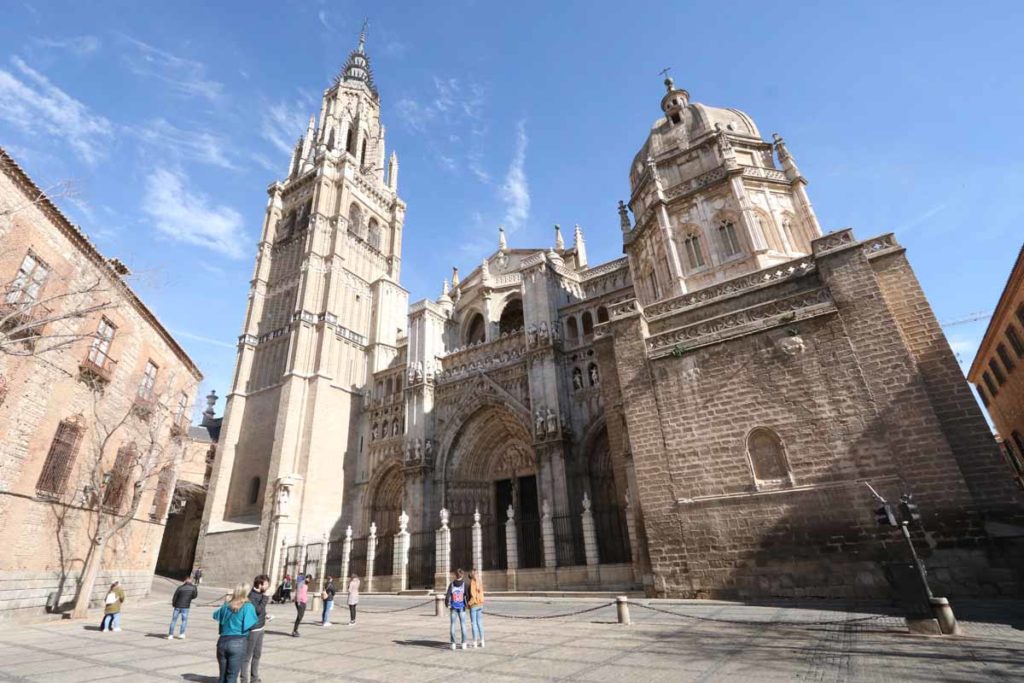
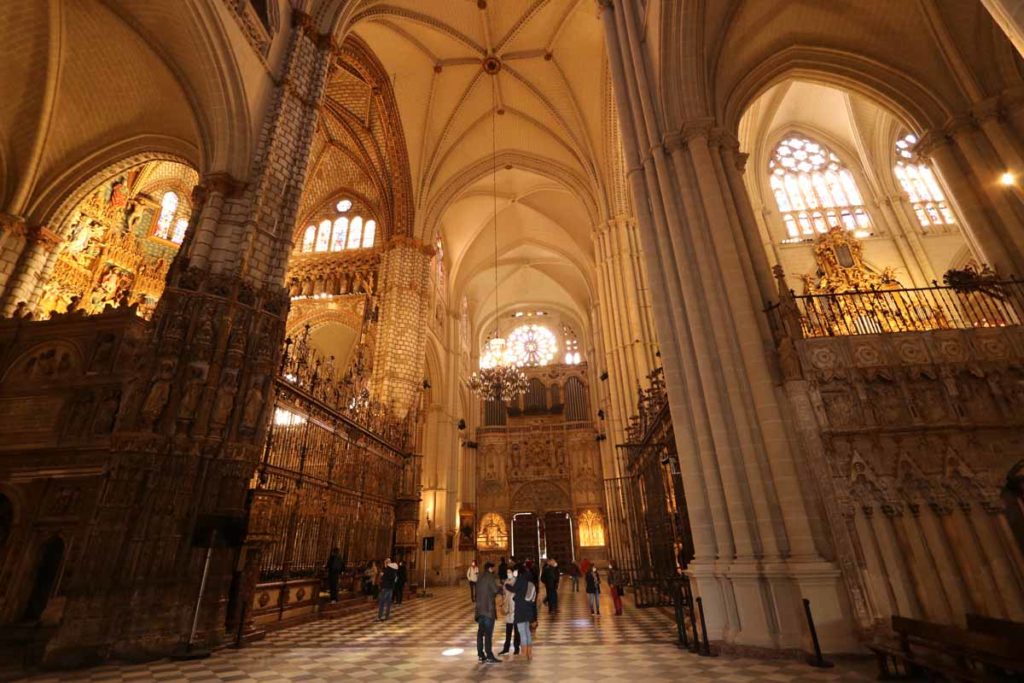
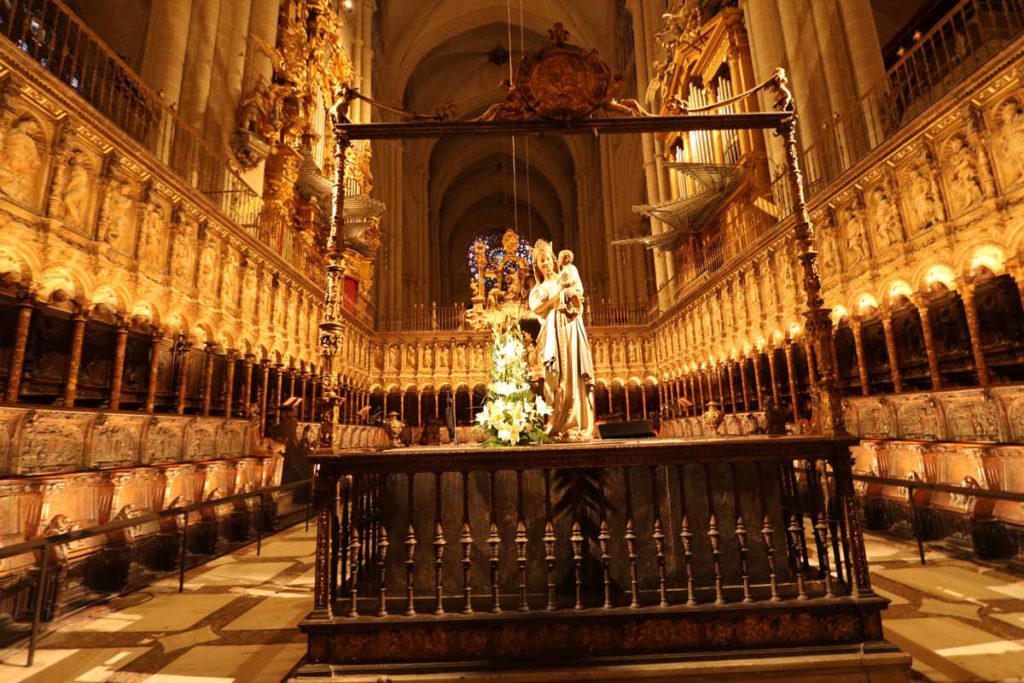
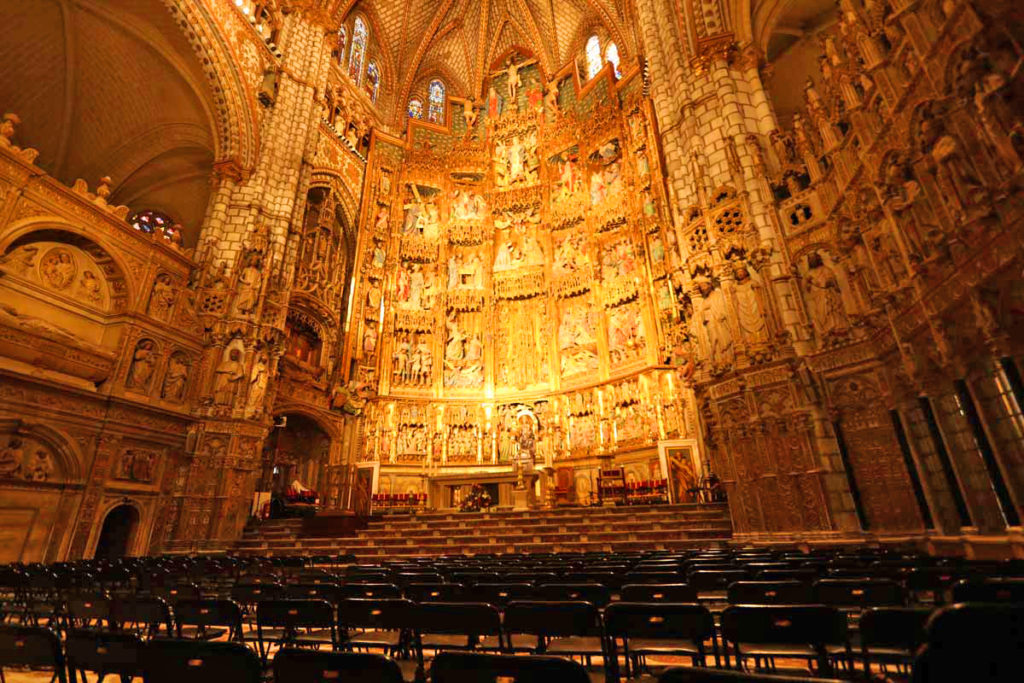
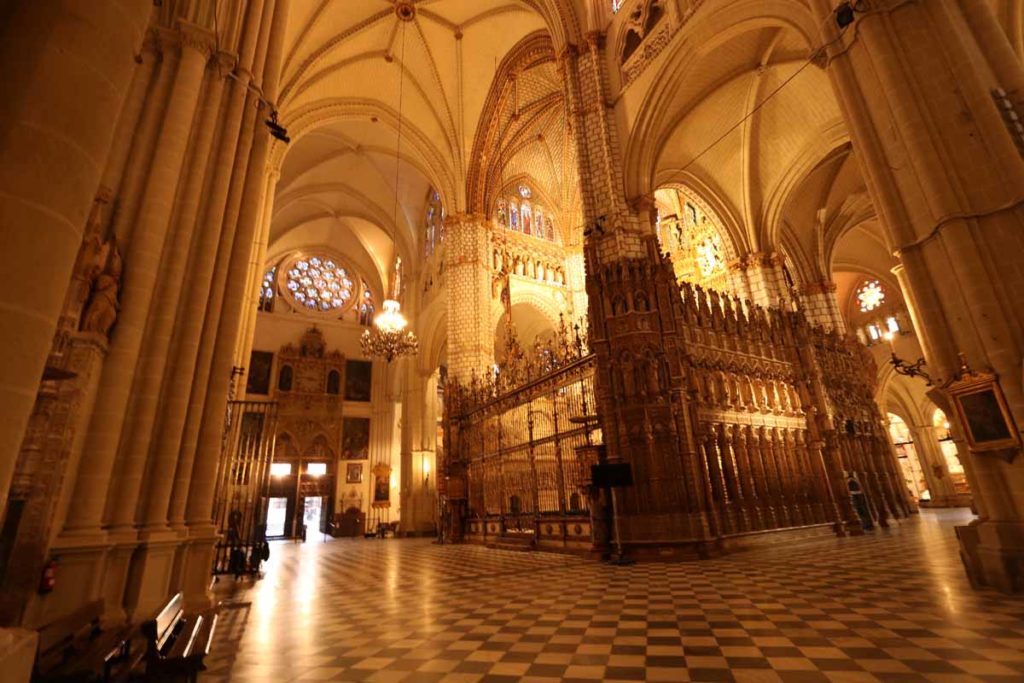
It’s a phenomenal Cathedral. More on Catedral Primada here.
Best of all? It’s free between 8 am and 9:30 Monday to Friday. We had the place almost entirely to ourselves as you see in the photos/video.
Catedral Primada is the one highlight you can’t afford to miss in Toledo.
Tip: Buy the Tourist Bracelet (Pulsera Turistica). It let’s you see 7 great highlights in Toledo (including most that I cover below) for a total of 12 Euros. Absolutely worth it. The website here (you can pre-buy your tickets if you wish)
Monasterio de San Juan de los Reyes
This Gothic monastery was built in the 15th century to commemorate the political victory of the Catholic monarchs which led to Isabella I taking the throne of Castile.
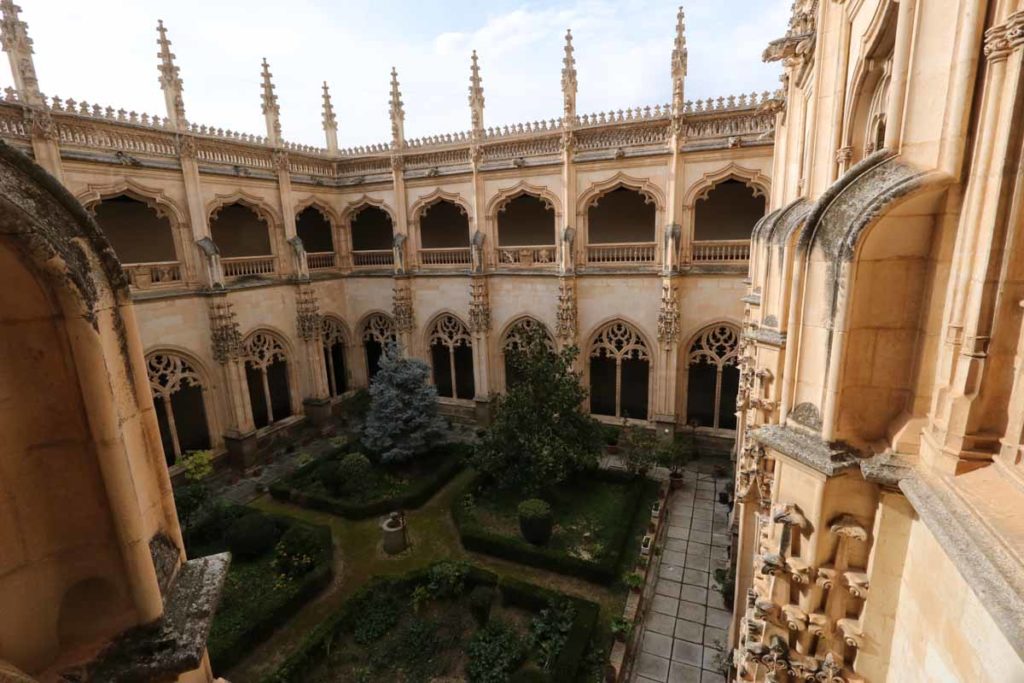
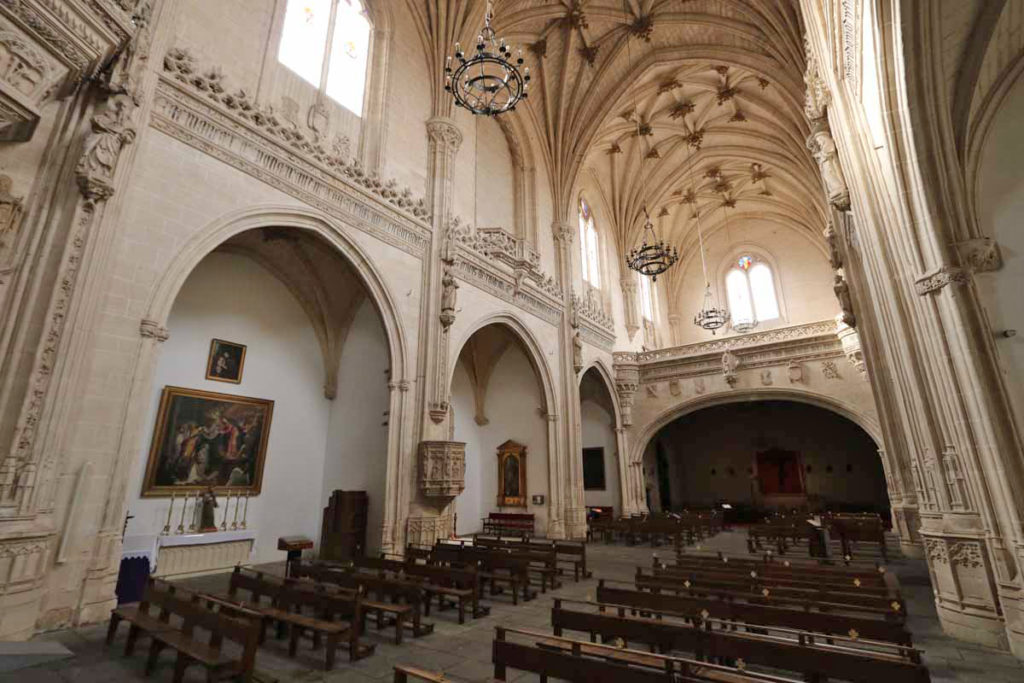
The monastery has a stunning church with incredible ornate reliefs on the side walls. It also has lower and upper cloisters overlooking a small garden in the middle.
Note: included in the Tourist Bracelet
Puente San Martin (St. Martin’s Bridge )
See this after visiting the monastery (It’s about 5 minutes down the hill). Built in the 14th century, it connected Toledo to the western side of the Tagus river.
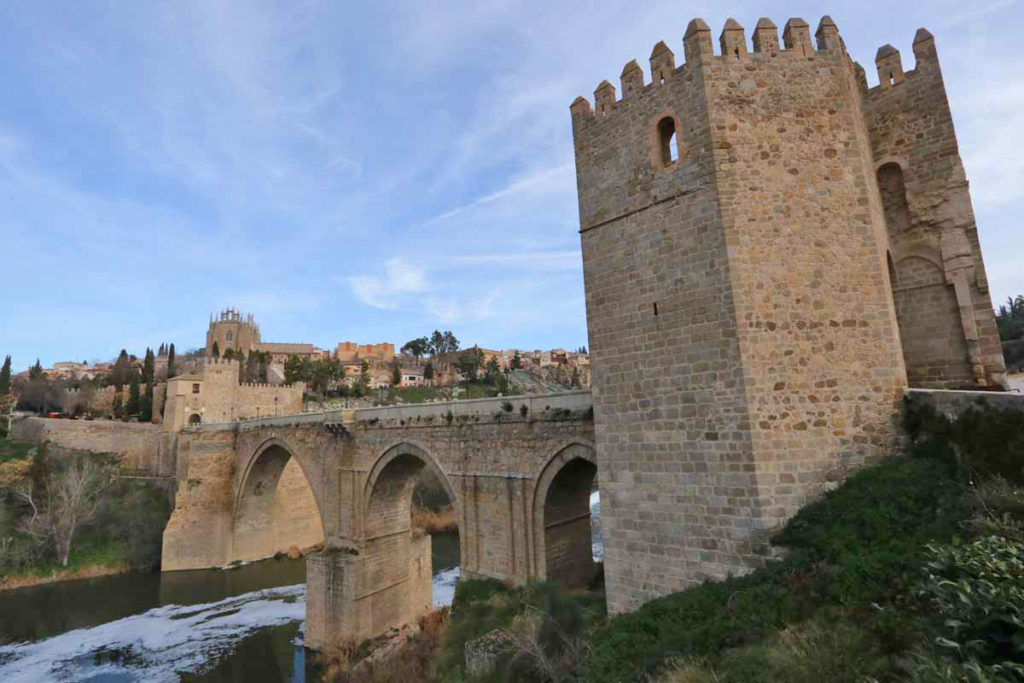
Great views of the city and river here.
Free.
Sinagoga de Santa María La Blanca
This synagogue was built in 1180. Sombre on the outside, it’s bright on the inside and strangely enough looks like a mosque with all its mudejar-style arches and beams.
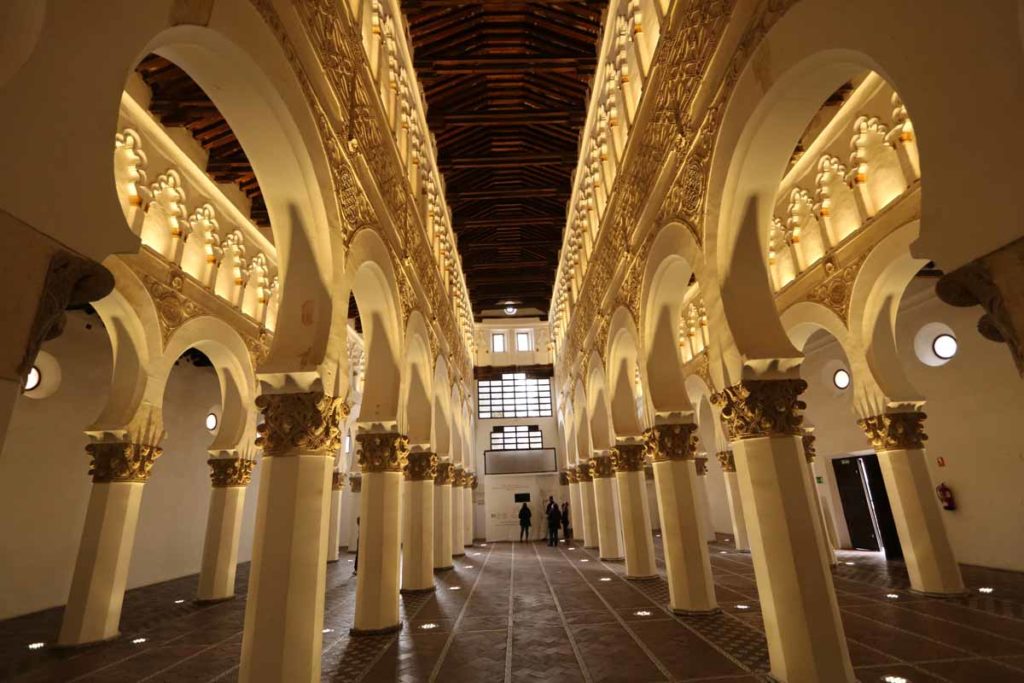
After 211 years in service, it was expropriated from the Jews in 1391 during the pogroms of the 14th century. It belongs to the catholic Church and today functions only as a museum.
Note: included in the Tourist Bracelet
Iglesia del Salvador
A non-descript little church at first glance. But this church was built over a mosque, which was built over a Visigoth church and Roman ruins. Walk through the church into a tunnel and you come out into a yard where there are ongoing excavations going on to unearth what’s underneath.
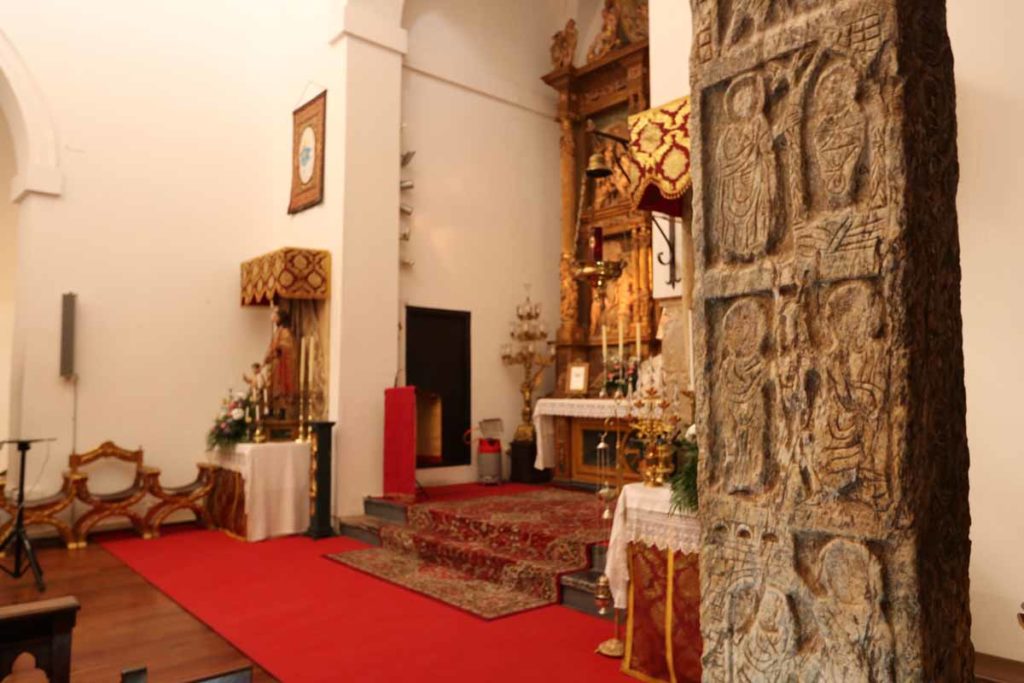
Within the church is an incredible detailed Visigoth Pilaster dating from the 6th or 7th century.
Note: included in the Tourist Bracelet
El entierro del Senor de Orgaz
Within the church of Santo Tomé is the 1586 painting by ‘El Greco’ (the Greek) named The Burial of the Count of Orgaz. El Greco was a Greek painter who moved to Toledo in 1577, becoming the city’s most famous painter (there’s a museum dedicated to him not far away). This painting is one of his best.
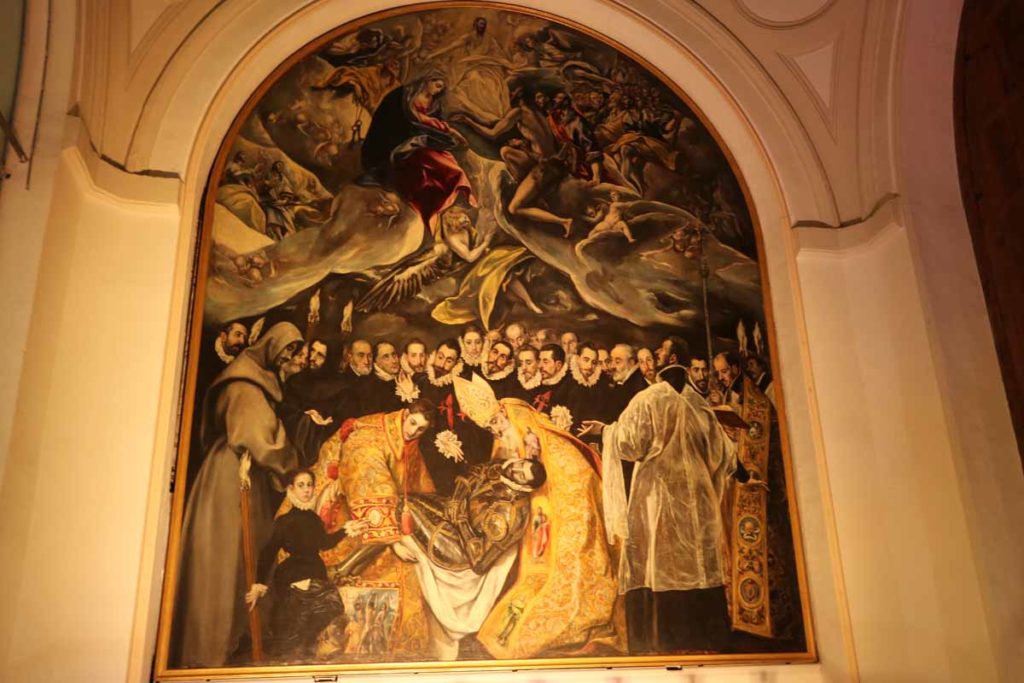
Note: included in the Tourist Bracelet
Iglesia de los Jesuitas (San Ildefonso)
It’s a pretty church. But the highlight here is climbing the stairs for the best views in Toledo.
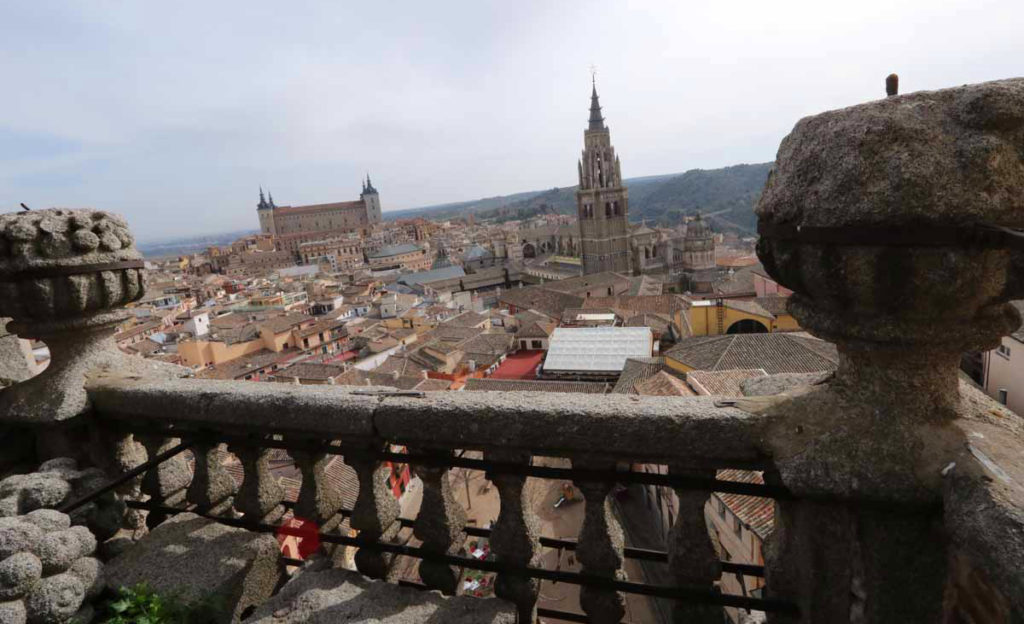
Note: included in the Tourist Bracelet
Ermita “Mezquita” del Cristo de la Luz
Built in 999 AD as a mosque (it was one of 10 in the city at that time). It, along with the Mezquita-Catedral in Cordoba, are the oldest examples of Islamic culture in Spain.
Following the reconquest of Toledo in 1085, the mosque was converted into a church.
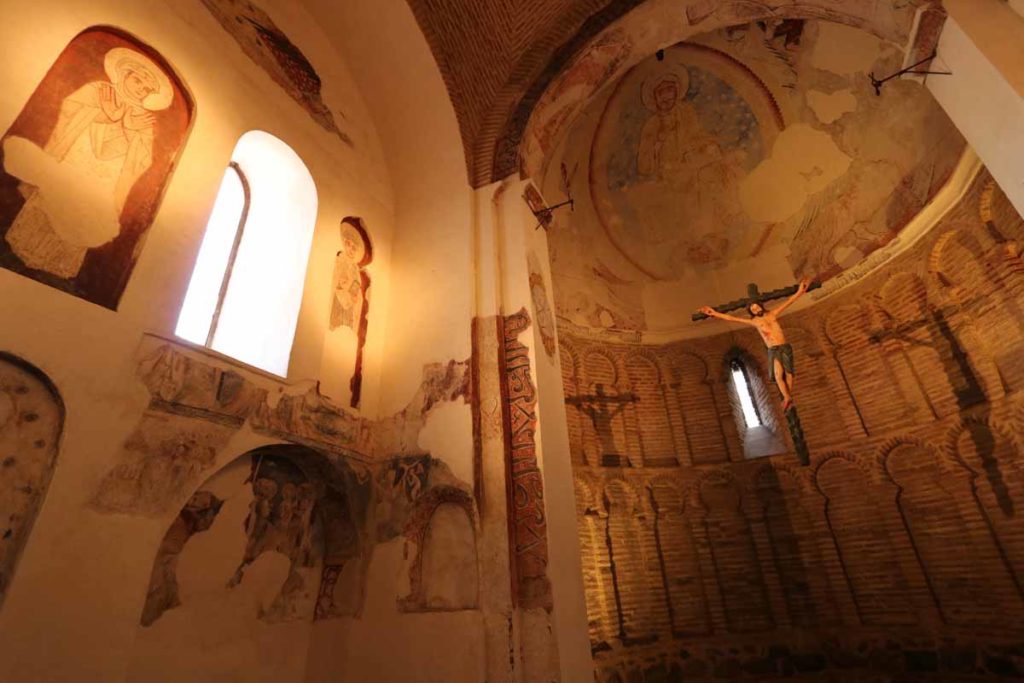
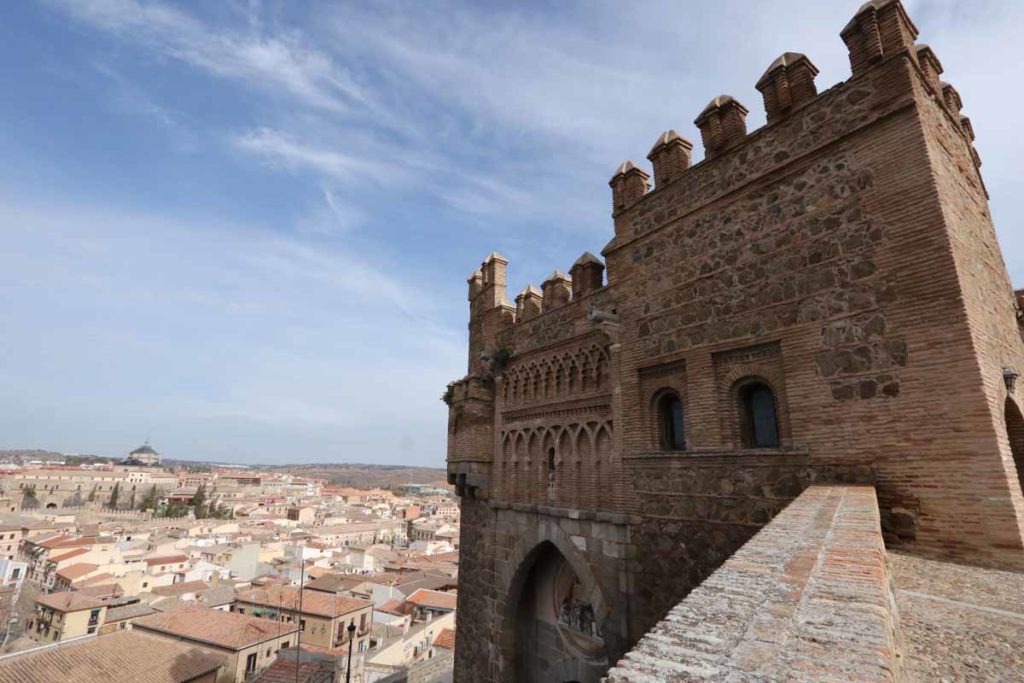
Note: included in the Tourist Bracelet
Real Colegio Doncellas Nobles
The institution was founded in 1551 by the Archbishop of Toledo and Cardinal Juan Martínez Silíceo (you’ll see his crypt in the church). Its objective was to educate young women to be good mothers.
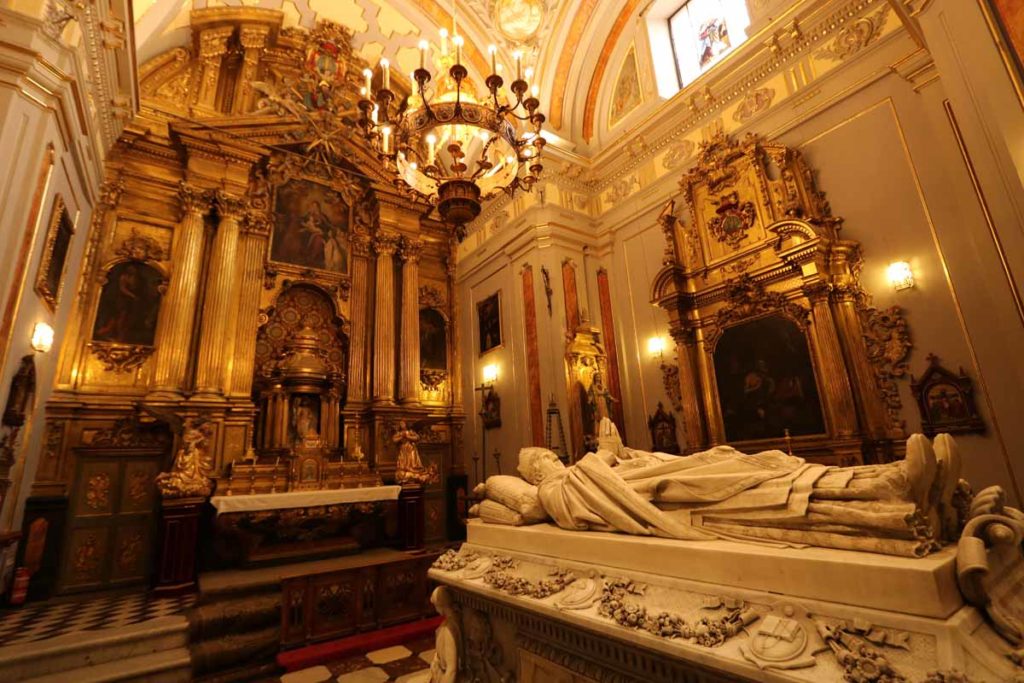
A beautiful building, it is on the list of Royal National Heritage Sites.
Note: included in the Tourist Bracelet
A few more highlights in Toledo
Go down the hill on the north side of the city and see the gates: Puerta del Sol and Puerta de Bisagra.
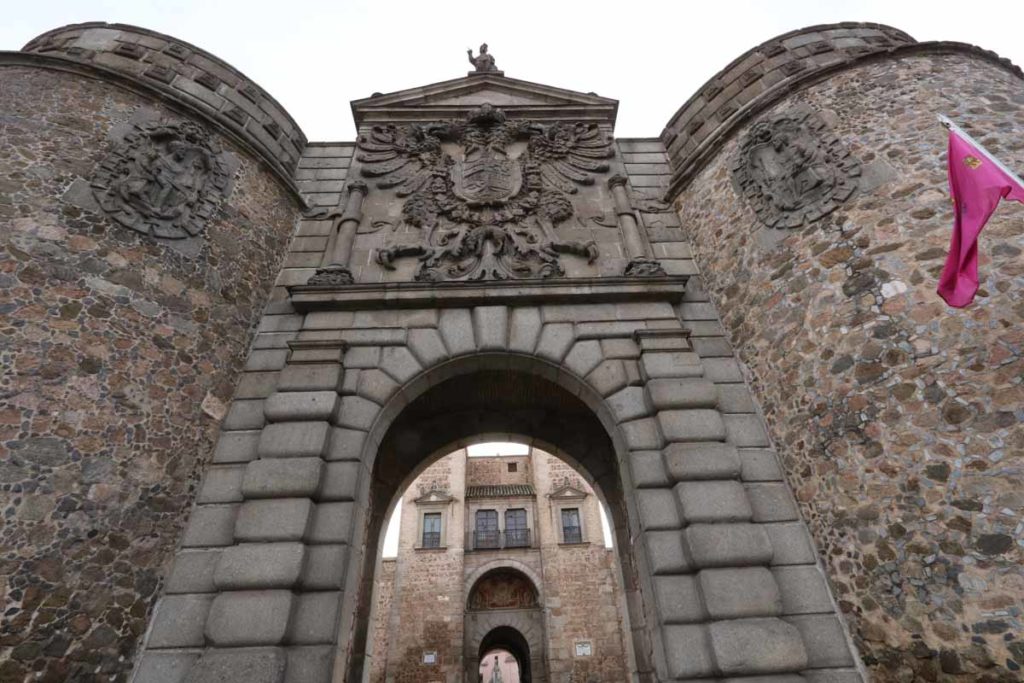
Note: across from the Puerta de Bisagra is a tourist information office. Fantastic service, very kind ladies working there.
I mentioned up top the Puente San Martin (San Martin Bridge). Make sure to see to also see Puente de Alcántara (Alcantara bridge) on the other side of town. Unfortunately we ran out of time…
The Alcazar de Toledo is the huge square building and houses a war museum. There’s a café in the building, on the top floor, which is supposed to have great views.
The Museo del Greco (El Greco Museum) for art lovers.
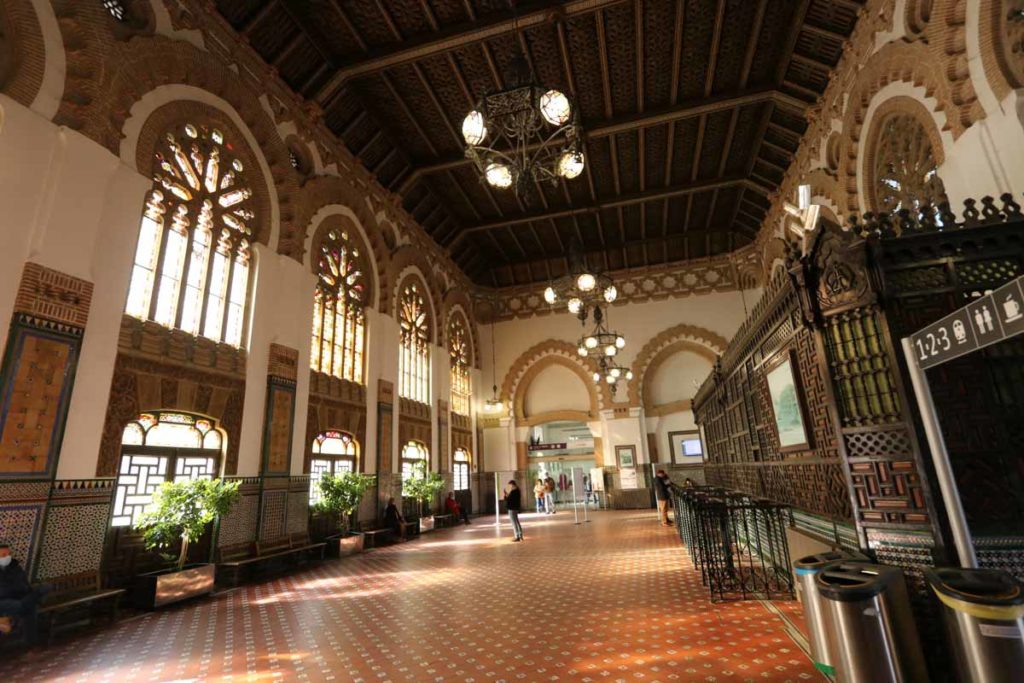
Toledo’s train station, built in Moorish design, is beautiful.
Across from the city, you can get great views at the Parador de Toledo (click on that if you want to read about the hotel and the night we stayed there). Just below the Parador is the Mirador de Valle which people always say you should visit. Well, the views at the Parador are better.
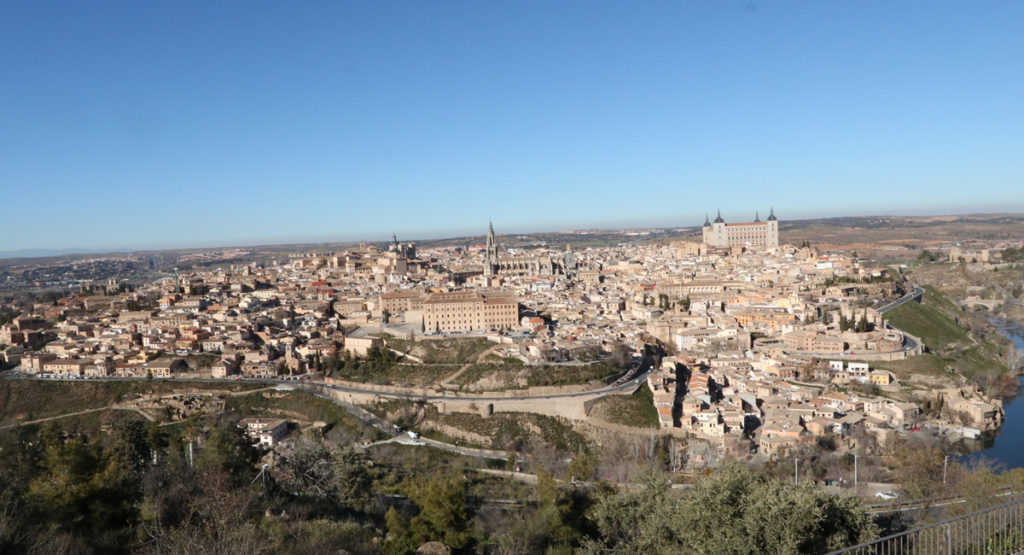
Toledo has many things to do. We spent 2 days full days (3 nights) and felt we could have spent another day or two.
Whatever you do, visit Toledo. It was a highlight of our month-long trip through Spain.
Practical Information on Toledo
Accommodation: We stayed at Barrio Rey hotel which was excellent value and well located. A slightly pricier option is Casa Palacio Rincón de la Catedral (as the name suggests, right next to the Cathedral).
Getting there: Toledo is a 30 minute train ride from Madrid Atocha station. From the train station you can take a bus (about 20 min) to Toledo’s main square (Plaza Zocodover).
Word of warning: Toledo gets busy on weekends. Try to plan your visit during the week.
Related: Visiting magical Segovia
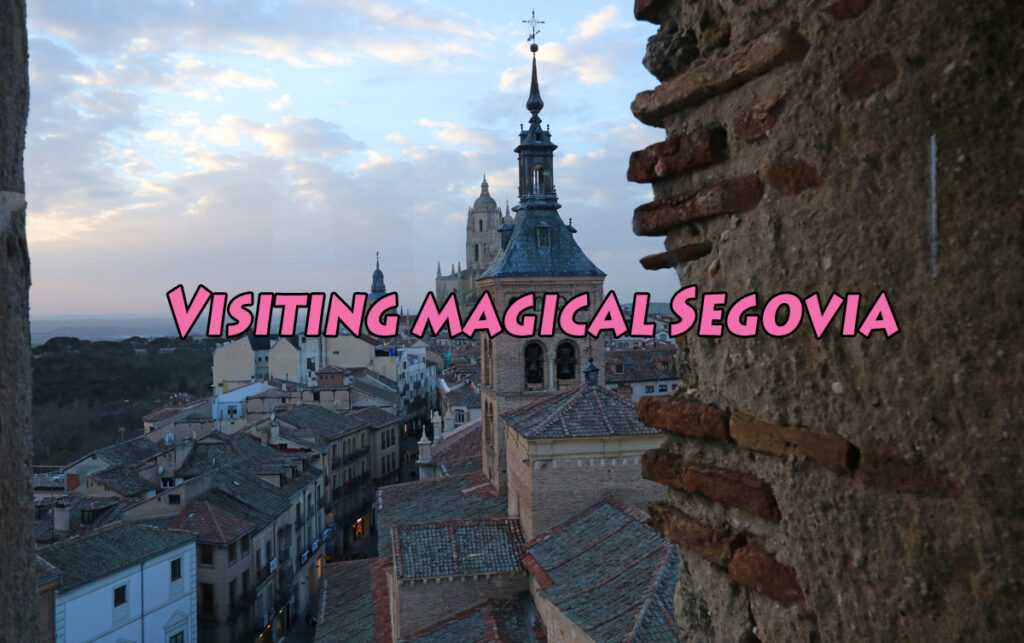
Related: The Best Paradors in Spain
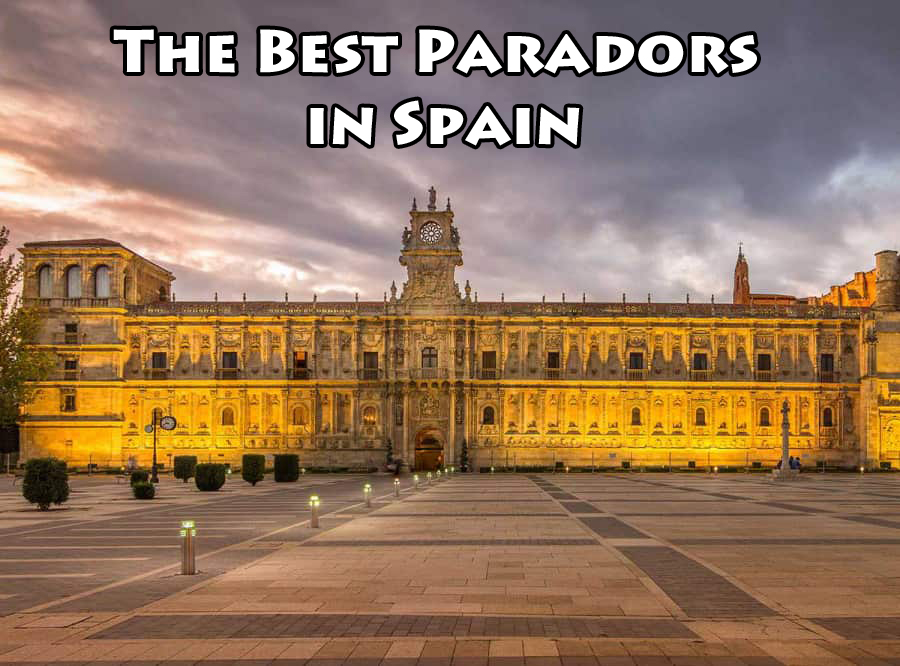
Related: The Medieval Walls of Ávila
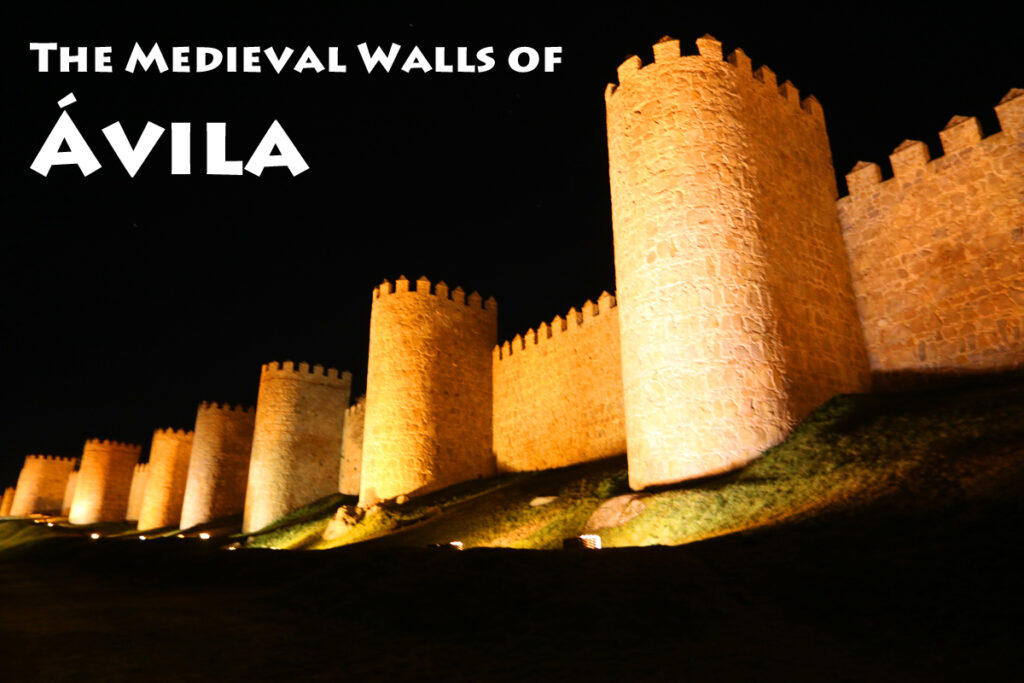

We loved Toledo too! I think we spent 2 days and also had the feeling we could easily stay a bit longer. Did you try the marzipan? They have a really long tradition in producing marzipan (and damascene knifes…). It seems we missed a lot of churches – they look beautiful.
Yes, marzipan!! We love marzipan and had quite a lot.
I think we felt the same way. We were surprised by how much there was to see and probably could have stayed another day or so. We felt the same way about Segovia (don’t know if you went? Another special place)